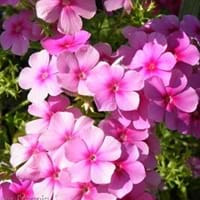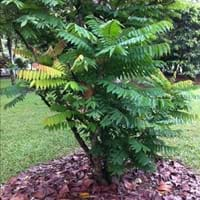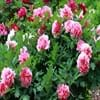Life Span
Perennial
Perennial
Type
Perennial
Flowering Plants, Herbs
Origin
Northeastern United States, Mid-Atlantic United States, Southeastern United States, North-Central United States, Central United States, South-Central United States, Canada
Hybrid origin
Types
Phlox divaricata,Phlox buckleyi, Phlox paniculata
Not Available
Habitat
Loamy soils, meadows, moist forests
moist forests, Mountains
USDA Hardiness Zone
4-8
4-9
Sunset Zone
1a, 1b, 2a, 2b, 3a, 3b, 4, 5, 6, 7, 8, 9, 10, 11, 12, 13, 14, 18, 19, 20, 21
1a, 1b, 2a, 2b, 3a, 3b, 4, 5, 6, 7, 8, 9, 10, 11, 12, 13, 14, 15, 16, 17, 18, 19, 20
Habit
Upright/Erect
Clump-Forming
Flower Color
Pink, Violet
Purple, Pink, Lavender
Flower Color Modifier
Not Available
Bicolor
Fruit Color
Not Available
Brown
Leaf Color in Spring
Green
Green
Leaf Color in Summer
Green
Green
Leaf Color in Fall
Green
Green
Leaf Color in Winter
Not Available
Green
Leaf Shape
Oblong
Pinnate
Plant Season
Summer, Fall
Spring, Summer
Sunlight
Full Sun, Partial Sun
Full Sun
Type of Soil
Clay, Loam, Sand
Clay, Loam, Sand
The pH of Soil
Acidic, Neutral, Alkaline
Acidic, Neutral, Alkaline
Soil Drainage
Well drained
Well drained
Bloom Time
Summer, Late Summer, Early Fall, Fall
Late Spring, Summer
Tolerances
Not Available
Drought, Salt
Where to Plant?
Container, Ground
Ground
How to Plant?
Seedlings, Transplanting
Cuttings, Seedlings
Plant Maintenance
Medium
Medium
Watering Requirements
Do Not over Water, Keep ground moist
Needs very little water
In Summer
Lots of watering
Lots of watering
In Spring
Adequately
Moderate
In Winter
Average Water
Average Water
Soil pH
Acidic, Neutral, Alkaline
Acidic, Neutral, Alkaline
Soil Type
Clay, Loam, Sand
Clay, Loam, Sand
Soil Drainage Capacity
Well drained
Well drained
Sun Exposure
Full Sun, Partial Sun
Full Sun
Pruning
Remove damaged leaves, Remove dead branches, Remove dead leaves
cut main trunk every 5 years, Prune after flowering, Prune central stem, Remove damaged leaves, Remove dead branches, Remove dead leaves
Fertilizers
All-Purpose Liquid Fertilizer, Apply 10-10-10 amount
All-Purpose Liquid Fertilizer, Apply 5-10-5 amounts, Compost
Pests and Diseases
Leafhoppers, Pink Root, Powdery mildew, Red blotch
Nematodes, Red blotch, Trunk Rot
Plant Tolerance
Drought
Drought
Flower Petal Number
Single
Single
Foliage Texture
Medium
Medium
Foliage Sheen
Matte
Glossy
Attracts
Bees, Butterflies, Hummingbirds
Butterflies, Leaf Hoppers
Allergy
allergic conjunctivitis, breathing problems, Irritate the mucus membrane
Itchiness, Not Available, Sore Throat
Aesthetic Uses
Beautification, Cottage Garden
Beautification
Beauty Benefits
Improve skin tone, Restores Hair Colour, Skin cleanser
Anti-ageing, Good Cleanser, Remove blemishes, Removes pimples
Environmental Uses
Air purification, Increases moisture in air, Prevent Soil Erosion
Air purification, Food for animals, Food for birds, soil stabilisation
Medicinal Uses
Aging, Antispasmodic
Cough, Haemorrhages, Laxative, Obesity, Tonic
Part of Plant Used
Leaves
Fruits, Leaves
Other Uses
Air freshner, Cosmetics, Making Sweet Scented Oil
Added to salads, Can be boiled and seasoned, pickled, Culinary use
Used As Indoor Plant
Sometimes
No
Used As Outdoor Plant
Yes
Yes
Garden Design
Cutflower, Mixed Border, Wildflower
Container, Cutflower, Mixed Border, Rock Garden / Wall, Wildflower
Botanical Name
PHLOX paniculata 'Robert Poore'
Averrhoa bilimbi
Common Name
Garden Phlox
Bilimbi, Mimbro
In Portuguese
Phlox
bilimbi
In Latin
Phlox
Rondo Beardtongue
Phylum
Spermatophyta
Magnoliophyta
Class
Magnoliopsida
Magnoliopsida
Order
Solanales
Oxalidales
Family
Polemoniaceae
Oxalidaceae
Clade
Not Available
Angiosperms, Eudicots, Rosids
Tribe
Not Available
Not Available
Subfamily
Not Available
Not Available
Season and Care of Garden Phlox and Bilimbi
Season and care of Garden Phlox and Bilimbi is important to know. While considering everything about Garden Phlox and Bilimbi Care, growing season is an essential factor. Garden Phlox season is Summer and Fall and Bilimbi season is Summer and Fall. The type of soil for Garden Phlox is Clay, Loam, Sand and for Bilimbi is Clay, Loam, Sand while the PH of soil for Garden Phlox is Acidic, Neutral, Alkaline and for Bilimbi is Acidic, Neutral, Alkaline.
Garden Phlox and Bilimbi Physical Information
Garden Phlox and Bilimbi physical information is very important for comparison. Garden Phlox height is 7.60 cm and width 5.10 cm whereas Bilimbi height is 38.10 cm and width 25.40 cm. The color specification of Garden Phlox and Bilimbi are as follows:
Garden Phlox flower color: Pink and Violet
Garden Phlox leaf color: Green
Bilimbi flower color: Purple, Pink and Lavender
- Bilimbi leaf color: Green
Care of Garden Phlox and Bilimbi
Care of Garden Phlox and Bilimbi include pruning, fertilizers, watering etc. Garden Phlox pruning is done Remove damaged leaves, Remove dead branches and Remove dead leaves and Bilimbi pruning is done cut main trunk every 5 years, Prune after flowering, Prune central stem, Remove damaged leaves, Remove dead branches and Remove dead leaves. In summer Garden Phlox needs Lots of watering and in winter, it needs Average Water. Whereas, in summer Bilimbi needs Lots of watering and in winter, it needs Average Water.





